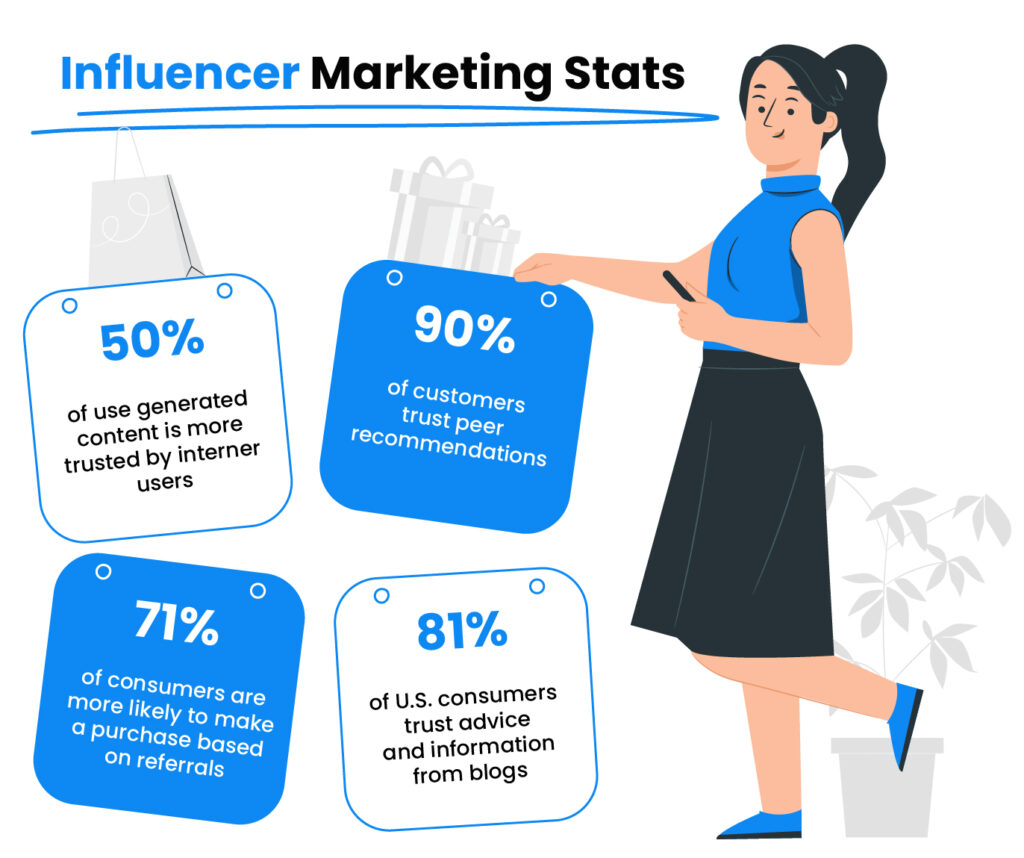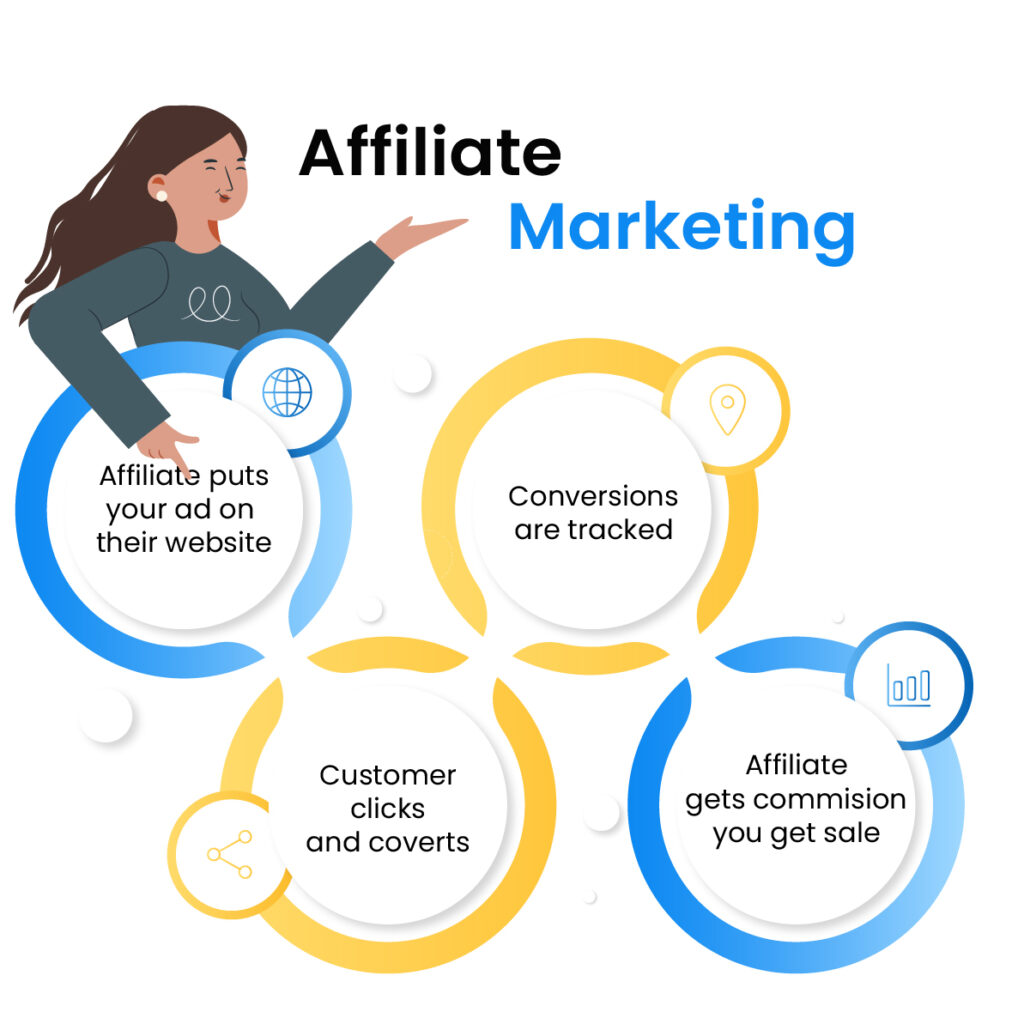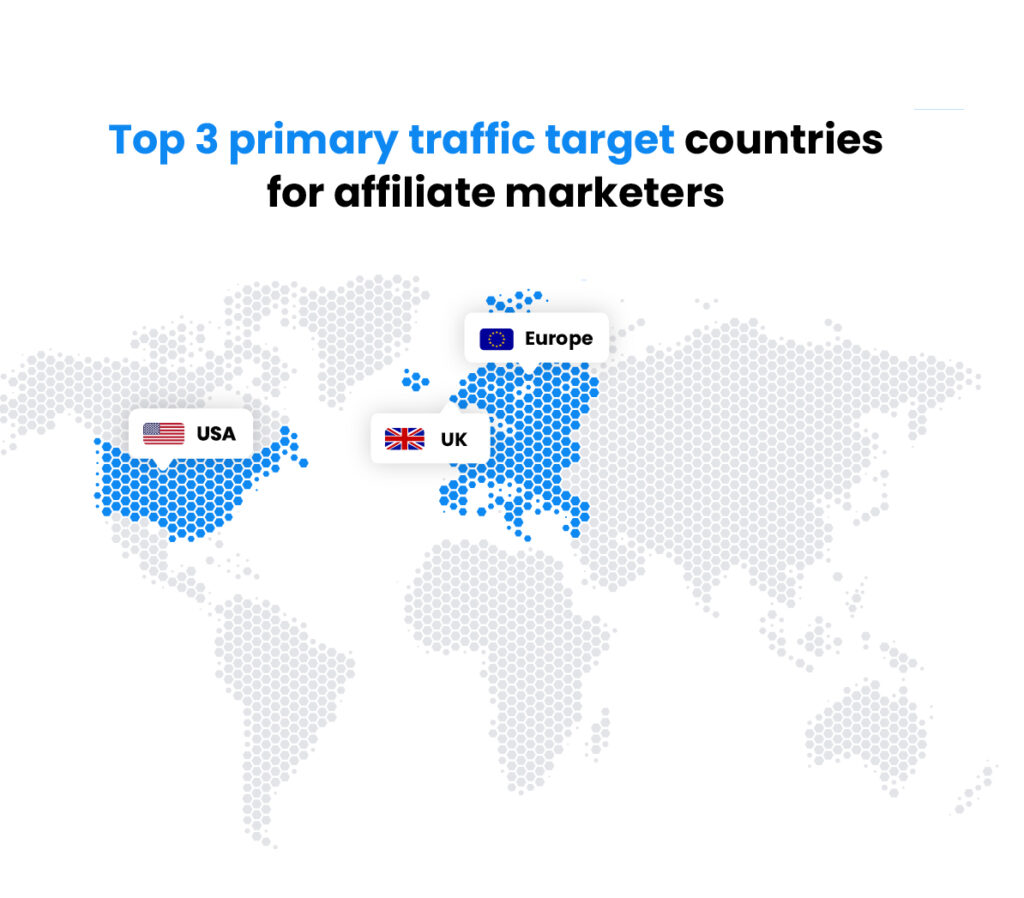
Affiliate marketing trends for 2025
Are you looking for ways to improve your affiliate marketing in 2025? Look no further. Check out the best affiliate marketing trends for 2025.

Affiliate marketing is transforming the fashion industry. Learn 10 actionable strategies to grow your fashion brand, increase customer engagement, and leverage influencer partnerships in 2025.
The fashion industry has always been known for its dynamic shifts and its creative trends, with iconic styles even running their cycles throughout the decades. The recent introduction of social media has proven to be a game-changer for fashion marketing, and how could it not be now with the ability to reach millions of people at the touch of a button? However, due to the enormous sea of users, finding and narrowing down the right target audience is much easier said than done.
The emergence of Covid-19 has impacted the market in several ways, causing people to find new ways to fuel their habits while staying indoors. The pandemic has ultimately resulted in a shift towards online shopping, especially on mobile phones. In an attempt to move parallel to the audience flow, many brands have taken to different social media platforms to advertise their products.
Influencer marketing and affiliate marketing are new marketing techniques that have emerged in the world of modern advertising. While both overlap, some similarities such as the undivided attention to maintaining customer relationships and providing users with social proof for certain products and services, they each have unique differences that we will touch on below. These distinctions are quite useful when deciding which technique to use for your business.
Another modern form of marketing that has taken the digital world by storm is influencer marketing. Influencer marketing is a social media marketing strategy where an influencer promotes certain products or services with the intention of increasing brand awareness. Influencer marketing campaigns are commonly held on a variety of social media platforms, such as Instagram, Facebook, or YouTube. This form of marketing is useful for brands who are looking to generate a buzz about their company, and are looking to benefit from the act of social sharing that the influencers can initiate among their viewers. Being creative, innovative, and memorable with content are all ways to spread like wildfire on social media, and finding an influencer that feels trustworthy and authentic with their audience is the key to a successful campaign.
An important feature of this technique is that social media influencers have built a relationship with their viewers over time and have established credibility, and this social proof leads to higher chances of them using the referral links or codes. This strategy could resemble the traditional endorsement-style advertising, where a well-liked celebrity posing with a certain product brings it a positive image.
Influencer marketing requires brands to focus on the amount of social media followers the influencer has and the activity on their social media posts. If the influencer has an overall consistent engagement rate on their posts and their following fits the niche of your target audience, it opens the possibility to a high potential reach. Depending on the size of the influencer marketing campaign, there are different types of influencers that could be more optimal than others. For example, a local fashion brand might opt for a nano-influencer who’s much more active with their followers rather than a macro-influencer , where your marketing efforts could potentially be lost in a sea of fake followers.
Whereas affiliates are paid commission for each click, conversion, or sale they make, influencers who promote products or services are usually paid out a flat rate by the brands. Since product placement is key, the relationship between the influencers and their audience is what is valuable to the brands. The influencers are also often provided with the product they should promote to try it out beforehand, which is of course a way for them to get to know what they’re introducing. Inevitably adding to the level of authenticity, it’s also another means for influencers to show the affiliate product in real time. Unboxing videos or product reviews being a great example of this. Influencers who are active and trusted in their niche may be sought after by multiple brands, earning themselves an alternate form of passive income.
Now that you’ve had a quick introduction to the two newest techniques in the digital marketing era, we can begin to observe their benefits in the fashion marketing space. Online shopping has many benefits to potential customers, however, it does remove a personal interaction that traditional in-person shopping experiences used to offer. With the whole process being digital, it may become trickier for a business owner to understand who is interested in their products, and how they come to eventually purchase them. From a sales perspective, it is important to know who your potential customers are, as it will be easier for you to understand their buying journey, and help tailor the process of sale to their needs.
While both influencer and affiliate marketing have their unique differences, they also have many similarities that make them a desirable social media marketing strategy for business owners of fashion brands. The first similarity is the effective method of word-of-mouth marketing techniques for brands who are looking to increase exposure as one of their business goals. Another similarity is that both affiliates and social influencers have high levels of trust with their viewers, making their recommendations much more valuable.
Here’s a quick rundown of how the whole process goes.
With that being said, there are also different variations on commission models between the affiliate programs. Generating sales seems to be the obvious goal for most companies, but there are other actions that are useful depending on the affiliate product or service. Apart from a sales transaction, these actions include a potential customer filling out a registration form, subscribing to a service, or sharing some content on their social media accounts. The objective of the business is the deciding factor of which commission model to use. While there are quite a few methods, here are a few of the most common models used today:
CPM has been used for many decades already and is used mainly on websites that generate a lot of traffic. For each thousand views on the advertisement, the affiliate earns a fixed rate even if the click-through rate (CTR) is low. While these advertisements are located in a highly exposed area (banner advertisement placement is important here!), the click-through rate is generally not as high as it used to be. To optimally raise the conversion rates, the advertisement should be placed on a website where the majority of the traffic generated is the target market.
CPL is a commission model that rewards affiliates with a fixed rate per lead, or potential customer, they send to the company. Also known as “lead generation”, it is commonly used in B2B businesses that benefit from potential customers leaving their contact details with them in case of future interest. This can be in the form of registrations, email sign-ups, or applications. The affiliate receives the fixed amount regardless if the lead follows through or not.
CPA is an extremely common model used now, consisting of paying affiliates a fixed rate when a specific action is completed using the links they provided. Whether it’s a sale, signing up for a subscription, or registering user details, this technique is the most cost effective for businesses as they only pay out when there is a completed action.
These days with the online market buzzing, fashion designers have a variety of options to increase their sales. Now with affiliate marketing, it’s possible to not only generate sales, but also to simultaneously build rapport between customers and the brand. This ultimately creates lasting relationships that convert into recurring sales, and shows a quite effective return on investments (ROI) when targeted to specific niches. You can definitely count on the influencer to make an impact on revenue, as their potential lies within their connection with their followers. Community is king!
When it comes to fashion, being ahead of the game is crucial! In recent years, digital marketing has stepped up and made itself dominant in the fashion marketing space, especially with the introduction of social media. Since covid-19 hit, people have taken to online shopping, causing a huge shift in marketing strategies. In 2021, a whopping 73% of all online purchases were made through mobile phones, proving the importance of having a social presence online. Influencer marketing and affiliate marketing have been making their way into nearly every niche, resulting in content creators putting more effort into making valuable content and maintaining high engagement with their community.
The fashion industry has taken the lead as the most popular niche last year, making up nearly a fourth of all affiliate program accounts. If you’re opting for a career in fashion marketing, this one’s for you. In 2020, the fashion industry made up 19% of all affiliate marketing sales. It increased up to 25% in 2021, and is expected to continue rising in the coming years. Future growth is inevitable when it comes to relationship marketing, and with both affiliate marketing and the fashion industry topping charts, it’s time to incorporate it into your strategies! Affiliate marketing is a multibillion dollar industry, with the spending in the U.S. alone expected to reach $8.2 billion by 2023. Growing immensely each year, affiliate marketing is clearly here to stay.
Now that we’ve covered what affiliate marketing is and why it’s inevitably the key to success for your brand in 2025, it’s time to start gathering useful tips and tricks of the industry. Don’t know where to begin? Apart from seeking out affiliate networks , it’s important to come up with a solid strategy for content marketing! Here are 10 marketing strategies guaranteed to help you plan your affiliate marketing campaign:
Making the buying process fun and memorable is a sure way to keep your customers engaged with what else you have coming! On social media platforms, users are bombarded with opportunities and deals from everywhere, naturally making them very selective. Being creative with your campaign adds a positive light, so seek out fashion affiliates and influencers to promote your brand and keep it dynamic! Don’t hold back on adding extra quirks to your experience. Implement custom or recyclable packing, send out email newsletters with upcoming deals or create style guides to show product versatility. Of course your customer wants to see 9 different ways to wear one scarf! These show you care about the customer which makes them feel special.
During the holiday season, people tend to feel more generous and giving, making this the perfect time for special campaigns. This is relatively consistent, so it’s a great opportunity to organize deals throughout the year on products that are relevant for the customer. Fashion designers should take advantage of regular celebratory festivities. Whether you’re offering Christmas specials during winter months, or generating buzz on bikini sales in spring, there’s always a chance to plan ahead! Each season gives you an occasion to try out different campaigns, observe community response, and build on it to improve it each passing year.
Fortunately, we are at a period of time where automation has become a common online tool in marketing campaigns. Since both affiliates’ and influencers’ social media presence revolve around community engagement, knowing when and how often to post is helpful to get more impressions and a higher ROI. Take advantage of the extra help and schedule ads for optimal hours and days. By doing engagement analytics, you can not only pinpoint desired timings, but also pre-write the ads and let the automation do the rest. Plan your marketing campaign ahead and free yourself up later! There are many key performance indicators (KPIs) such as click-through rate (CTR) and conversion rates that can help you track your progress throughout the campaigns.
The more specific a niche is, the more likely it is that targeted marketing campaigns will be successful. Targeting people who have a specific interest in certain styles, fabrics, or lifestyle is beneficial to the performance of fashion marketing strategies. When it comes to influencers, having a target audience is easier since people follow them on their own accord. Affiliates can also manage to narrow down a niche for affiliate marketing, albeit to a lesser degree, with geo-targeting .
The FOMO-type campaigns have time and time again been shown to be quite effective. Whether it’s a limited edition product or just a few spots left for a life-changing experience, both affiliates and influencers can utilize this popular method. First, create a hype around a product, service or experience that you genuinely believe to be worth the buzz. Then, emphasize the limited availability of it, generating an atmosphere of excitement and suspense, and moving engagement levels. This gives the customers not only something to anticipate, but also something exciting to follow along with the content creator.
Although digital marketing guarantees high impressions and user convenience, working with locals and holding in-person events is a sure way to get exposure and meet your customers. This gives customers a sense of personal interaction, as they had a full on memorable experience as well as the chance to see the person behind the brand. Proactivity is a plus, as it highlights the transparency and genuine effort behind the campaign. Organizing a fashion show, partnering with local art galleries, or hosting a pop-up store are all ways to integrate with the local community. These also can help generate content for social media, as followers generally like following content creators’ “behind the scenes” in real life.
This social media marketing strategy works a bit better with influencers than affiliates, although it isn’t impossible. When it comes to brand exposure and influencer marketing, post engagement on social media content is really important here. Getting any celebrities to work with you impacts the buzz you’ve already generated, increasing impressions and possibly even going viral! Working with celebrities is optimal on social platforms that can actually show the audience that there’s a real connection to this campaign . Affiliate merchants may opt for this if the celebrity is known and well-viewed in their target niche, although it may be tricky for an affiliate to announce celebrity partnerships on certain mediums, such as a blog post or email list.
As highlighted in the previous point, partnerships are important! Partnering with fashion bloggers is a great way to get impressions from potential customers who are already involved in following fashion trends. This strategy increases potential leads, as the ads are directed towards a guaranteed target audience. By increasing traffic between multiple social channels, both affiliates and influencers can benefit from this strategy.
Just like in fashion, keeping up with the digital trends are also equally important! These include things like viral TikTok challenges, charity runs, using different photography/video effects and even, as it’s beginning, bringing up the metaverse. It’s always fun to see an influencer take on a certain trend made in their own style, since it’s fun and familiar at the same time. See what everyone is talking about, get creative, and show the world what you got! This strategy may work better with visual user-generated content , so influencers may have a higher engagement rate than affiliates here. Your participation shows your followers that you are ‘one of them’, experiencing these trends just as they are. By loosening the barrier between the creator and the community, the customers feel more comfortable and familiar with the brand.
The high maintenance of having a social media presence can be overwhelming, as it is difficult to consistently produce quality content.. However, there is no doubt that nowadays in the fashion industry, social media marketing is essential to having a successful brand. A designer should be ready to let go of their own doubts when it comes to wondering what to write in captions, or overthinking whether those inspirational quotes fit there or not. The fact of the matter is that some designers have to step out of the box and put themselves out there if they don’t have starting capital. In the long-run, it’s important to try to be relatable with the customers so it hits home, and they feel comfortable. Remember that social media is not meant to be composed for the designer, but rather for the customers.
The key takeaways from this article highlight the differences between affiliate marketing and influencer marketing. Affiliate marketing is good for sales generation, email registrations or subscriptions, and typically works on a CPA model. Influencer marketing is good for increasing brand awareness and building hype around products, often paid in flat rates. While both have their differences, they also are similar in the sense that they have value in their engagement rates and relationships with their community. Digital marketing is key for success in 2025, as online shopping is growing increasingly common. Having a social presence on social media platforms now is essential, so make sure to include it in your marketing strategy!
If you feel convinced that affiliate marketing or influencer marketing can benefit your brand, search for the right affiliates and use affiliate software such as Post Affiliate Pro that can assist you in the process of keeping track of KPIs to maximize your ROI. Having a career in fashion marketing can be demanding, but the excitement and ability to keep up with such a dynamic industry is what makes it interesting!
Fashion marketing is a branch of marketing that deals with online or physical advertising campaigns and promotional events directed at the targeted customers for fashion, clothing, and accessories.
Some KPIs that are essential for fashion marketing include cost per action (CPA), click-through rate (CTR), conversion rate, and return on investment (ROI).
Using online tools to build email address lists in return for free trials, samples, or promotional discounts is a sure way to gather potential customers. By utilizing lead nurturing strategies, such as making sure the registration process is swift and offering promotions along the way, it is possible to increase conversion rates.
Influencer and affiliate marketing are different. Influencer marketing is brand-focused, meaning it is useful for increasing brand awareness and generating a buzz to their followers. On the other hand, affiliate marketing is mostly utilized to increase a specific metric for a brand.
In 2021, the fashion industry made up a quarter of all affiliate marketing programs, making it by far the most popular industry.
Penelope is a seasoned copywriter and content specialist. With a background in business and psychology, she translates complex ideas into easily digestible content. Drawing on extensive experience working with people, she strives to make useful and comprehensive content. When Penelope's not experimenting with endless word combinations, she's spilling herself over canvases and plants.
Ready to elevate your fashion business? Discover top affiliate strategies and tools to maximize your sales and brand reach.
Are you looking for ways to improve your affiliate marketing in 2025? Look no further. Check out the best affiliate marketing trends for 2025.
Explore whether micro or macro influencers make better affiliates. Discover the pros and cons, costs, engagement, and authenticity to help your brand choose the...
Discover expert strategies for leveraging Facebook, Instagram, Twitter, Pinterest, and Snapchat to boost your affiliate marketing in 2025. Learn how to optimize...







